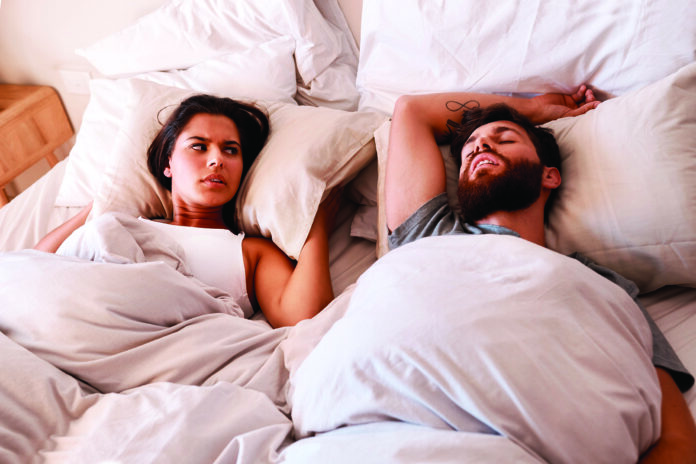(Family Features) Snoring throughout the night. Gasping for air suddenly while sleeping. Feeling tired after a night of rest. These aren’t just signs of a poor night’s sleep – they could be symptoms of obstructive sleep apnea.
Sleep apnea is a serious sleep disorder characterized by a repetitive collapse of the airway during sleep. Most people with sleep apnea don’t even know they have it – in fact, 80% of people with sleep apnea in the United States are undiagnosed, according to research published in the “American Journal of Epidemiology.”
Experts from the American Academy of Sleep Medicine (AASM) recommend most adults get at least seven hours of sleep each night without waking frequently. If you have untreated sleep apnea, healthy, uninterrupted sleep can be hard to achieve. When the airway collapses or becomes blocked while you sleep, it causes you to wake briefly – maybe with a snore or gasp for air – to unblock the airway.
Untreated sleep apnea can contribute to long-term health problems, including hypertension (high blood pressure), heart disease, stroke, Type 2 diabetes and depression. Overall quality of life can also suffer. It can lead to a decline in mood, lower work productivity, difficulty concentrating and making decisions and an increased likelihood of getting into a traffic accident due to sleepiness.
The disorder may even affect your family and relationships; snoring or poor sleep due to sleep apnea can keep your family members up at night, affect your mood with others and impact your general decision-making. Consider this additional information about sleep apnea from Count on Sleep, a collaborative awareness program led by the AASM.
Signs and symptoms of OSA:
* Snoring or noisy breathing
* Stopping breathing while asleep
* Waking up gasping or choking
* Restless sleep or waking up tired and groggy after a full night’s sleep
* Insomnia
* Waking up frequently to use the bathroom
* Having headaches in the morning
* Feeling sleepy or falling asleep during the day
* Having difficulty with memory or concentrating
* Mood changes or irritability
* Drowsy driving
Risk factors for OSA:
* Overweight or obesity (BMI of more than 30)
* High blood pressure
* Neck size of more than 17 inches for men; 16 inches for women
* Coronary artery disease (a type of heart disease) or heart attack
* Atrial fibrillation or other heart rhythm problems
* Congestive heart failure
* Type 2 diabetes
* Stroke
* Daytime sleepiness
If you think you may have undiagnosed sleep apnea, talk to your doctor about your signs, symptoms, risk factors and concerns. If friends or family members exhibit these symptoms, urge them to talk to a doctor.
Your doctor may screen or test you for sleep apnea, which could include an at-home sleep test or sleep study at an accredited sleep center. If diagnosed, treatment options include continuous positive airway pressure (CPAP) therapy, oral appliance, surgery or lifestyle changes.
Learn more about how sleep apnea affects health and take a short quiz to see if you may be at risk at countonsleep.org.
Sidebar: Sleep Apnea Treatments
When followed properly, sleep apnea treatment improves breathing, sleepiness and quality of life. Some people may find the disorder improves through lifestyle changes such as losing weight, sleeping on their side or quitting smoking or drinking alcohol. Most of the time, however, other treatment options are necessary, such as:
CPAP
The most common and recognized treatment for sleep apnea, a CPAP machine provides a steady stream of air to keep your airway open throughout the night.
Oral appliance therapy
Similar to a mouthguard, an oral appliance can be worn at night to prevent the airway from collapsing by moving the jaw forward.
Surgery
If lifestyle changes, CPAP or oral appliance therapy don’t work, there are surgical options to treat sleep apnea. They include upper airway stimulation, which uses an implanted device to stimulate a nerve that controls the tongue, moving it forward while you sleep.
Photos courtesy of Shutterstock
#17144
Source: American Academy of Sleep Medicine



































